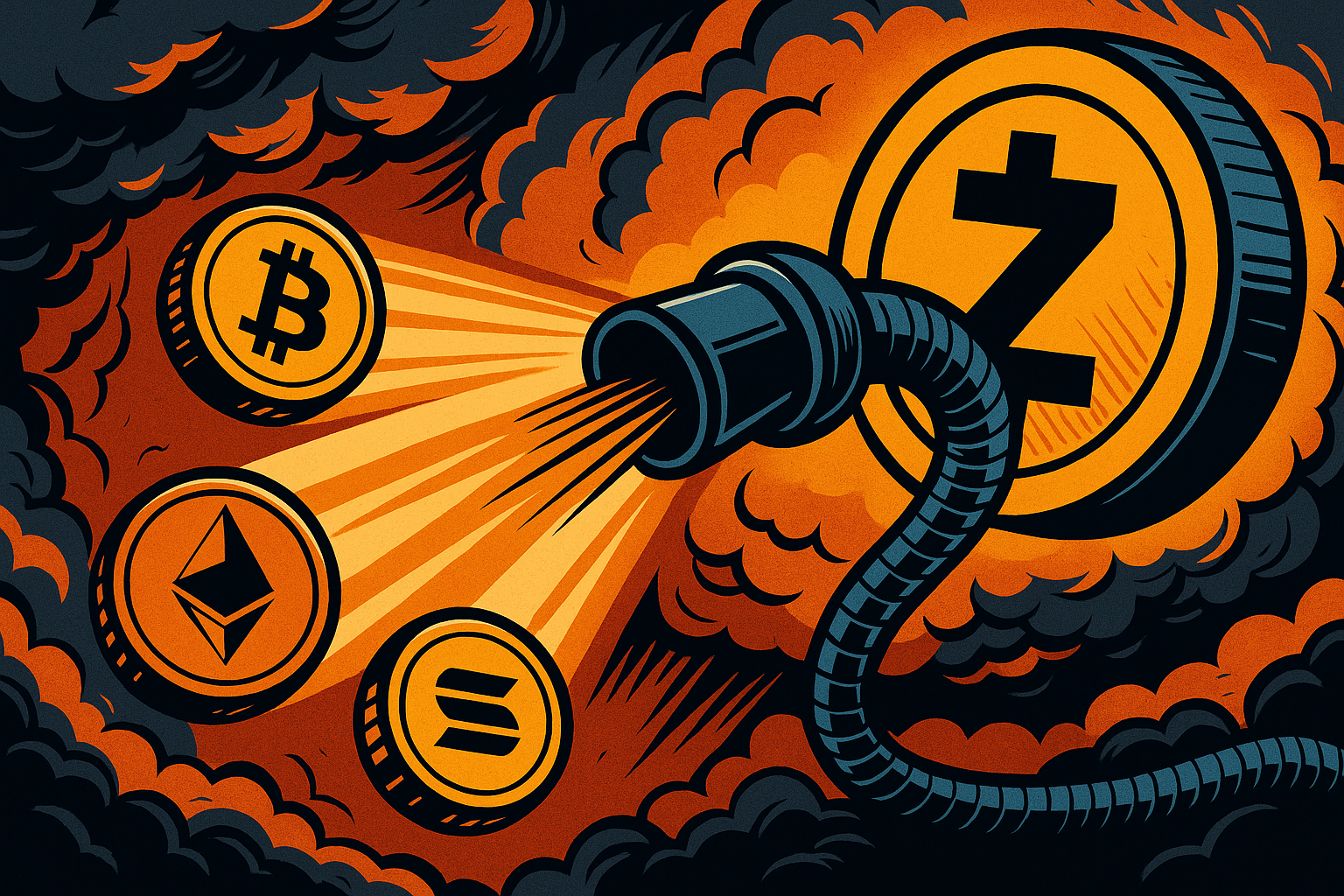Cardano
Midnight and Google Cloud Join Forces to Power Privacy‑First Blockchain Infrastructure

- Share
- Tweet /data/web/virtuals/383272/virtual/www/domains/theunhashed.com/wp-content/plugins/mvp-social-buttons/mvp-social-buttons.php on line 63
https://theunhashed.com/wp-content/uploads/2025/10/md.png&description=Midnight and Google Cloud Join Forces to Power Privacy‑First Blockchain Infrastructure', 'pinterestShare', 'width=750,height=350'); return false;" title="Pin This Post">
In late September 2025, the Midnight Foundation quietly dropped a tweet that signaled a bold new chapter: “Under this collaboration, Google Cloud will operate critical network infrastructure (including a validator) and provide Confidential Computing.” The post, terse yet loaded with implication, quietly announced a deeper alliance between Midnight and Google Cloud.
At first glance, this might read like a standard cloud services contract. But in the context of Midnight’s mission—building a privacy‑first, zero‑knowledge smart contract blockchain—the collaboration takes on much greater weight. It represents not just a technical alliance, but a statement about how privacy, scalability, and trust might evolve in Web3’s next phase.
A New Pillar for Privacy Infrastructure
Midnight describes itself as a blockchain engineered for “rational privacy,” a platform where sensitive data can be protected by default while still enabling selective disclosure when needed. Its architecture integrates zero‑knowledge proofs and programmable privacy rules, effectively flipping the paradigm that blockchains must be fully transparent.
The problems Midnight aims to solve are real. Many public blockchains leave transaction details, balances, and metadata exposed. That’s fine for public use cases, but it blocks adoption in sectors that demand confidentiality—finance, identity, healthcare, regulated data, and more. Midnight’s goal is to bridge that gap: allow smart contracts to operate with privacy guarantees while still satisfying auditability, compliance, or verifiable transformations.
In announcing the collaboration, Midnight framed Google Cloud’s participation as a way to accelerate privacy‑first infrastructure development and expand the growing ecosystem of zero-knowledge applications.
Google Cloud’s Role: Validator, Confidential Computing, and Beyond
Under the terms of the collaboration, Google Cloud will take on operational responsibilities, including running a validator for the Midnight network. That gives the cloud provider a direct role in network consensus and infrastructure.
But the link goes deeper. Google Cloud’s Confidential Computing offerings will be deployed to isolate sensitive data even during computation, effectively reducing the trust boundary so that data processed in the cloud might stay shielded from cloud operators themselves.
Moreover, Google’s cybersecurity arm, Mandiant, will contribute advanced threat monitoring and incident response capabilities for Midnight’s ecosystem. That layer of protection is intended to reassure institutional developers who need robust defensive infrastructure in order to build with confidence.
The collaboration further extends into developer support. Startups building on Midnight will be eligible for the Google for Startups Web3 Program, with up to $200,000 in Google Cloud credits over two years, along with training and mentorship. That commitment aims to lower the barrier to entry for builders working in privacy‑sensitive domains.
What This Means for Web3, Privacy, and Adoption
The Midnight–Google Cloud alliance is more than a service contract: it signals a shift in how infrastructure might be provisioned in Web3’s next generation. Large cloud providers outsourcing trust and running nodes or validators is not new, but coupling that with confidentiality at the compute layer, threat monitoring, and developer incentives changes the narrative.
For projects that require both privacy and scalability—such as financial systems that must comply with regulation, or identity systems that must not leak personally identifying data—this kind of infrastructure could become a baseline expectation. The promise is that developers won’t have to build from scratch the heavy privacy machinery; they can lean on a platform with institutional backing, safety guarantees, and operational scale.
Skeptics caution that such arrangements must be transparent. Some in the crypto community even argue that Midnight is merely paying Google for services, rather than forming a true partnership. The distinction matters: if Google acts as a validator, how will checks and balances or decentralization be preserved? How much control will Midnight retain? How transparent will the deployment of Confidential Computing be? These questions will need answers if the collaboration is to command trust from open‑source and decentralization purists.
Yet early reactions have been favorable. Charles Hoskinson, founder of Cardano and vocal supporter of Midnight’s broader ecosystem, expressed excitement about Google joining the effort and declared the move as adding value to the Cardano ecosystem.
It’s also noteworthy that the announcement arrives during a period of rapid competition in cloud infrastructure for AI, Web3, and confidential computing. Many large tech players are vying to host next‑generation workloads securely. In that light, Midnight positions itself as a front line for privacy innovation, while Google Cloud gains a marquee blockchain project that pushes its Confidential Computing narrative into sharper focus.
Risks, Opportunities, and the Road Ahead
This collaboration has its share of risks. Integrating confidential compute with consensus infrastructure poses technical complexity. Ensuring that validator operations remain decentralized and subject to oversight is essential, otherwise the trust model becomes opaque. The success of the project hinges on whether developers—especially those needing compliance or regulatory alignment—will adopt a chain with such ties to a hyperscaler.
On the flip side, the upside is compelling. Privacy-enabled smart contracts could open doors in regulated finance, healthcare, identity, and public sector domains. Enterprises might finally trial blockchain applications if they don’t have to accept full transparency of sensitive data.
The developer incentives Google is offering could drive more experimentation and help bootstrap a vibrant ecosystem. That can accelerate the pace at which privacy‑preserving applications become credible and production-ready.
For Midnight, the stakes are high. This is one of the biggest external bets on its architectural vision, and how well execution goes will shape its reputation in Web3. For Google Cloud, it’s a chance to deepen its credentials in Web3 and confidential computing.
In the crowded space of blockchain projects promising privacy, this alliance stands out not merely for ambition, but for institutional weight. If it works, it could become a template for a new class of privacy‑first networks: ones that combine open consensus with protected computation, enterprise readiness, and developer support.
Time will tell whether Midnight and Google Cloud can deliver on that promise, but their collaboration is already a marker of a more serious phase in the maturation of blockchain privacy infrastructure.
Cardano
Solana co‑founder publicly backs Cardano — signaling rare cross‑chain respect after 2025 chain‑split recovery
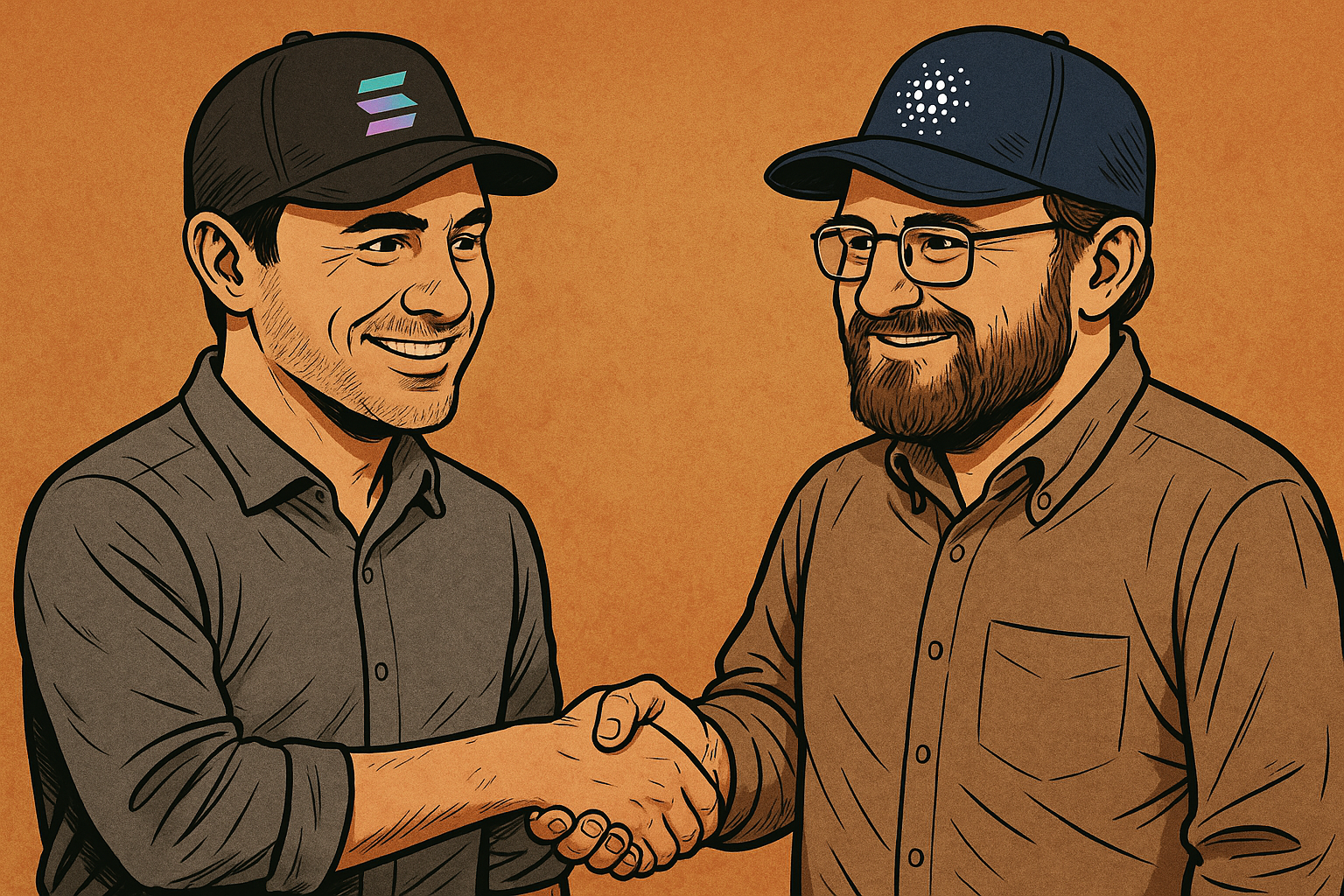
From Incident to Validation
In a development that surprised many in the blockchain world, Solana co-founder Anatoly Yakovenko publicly praised Cardano following its recent chain-split incident. What could have been a blow to Cardano’s reputation instead became an unexpected moment of validation — not just from within its own ecosystem, but from one of its most prominent rivals.
The Split That Wasn’t a Stop
On November 21, 2025, Cardano experienced a technical divergence caused by a malformed transaction. The issue stemmed from a bug in the serialization and deserialization logic of its node software — a deep protocol-level vulnerability. Some nodes processed the transaction as valid, while others rejected it, resulting in two competing forks of the blockchain running simultaneously.
But here’s the critical part: Cardano never stopped. The Ouroboros consensus mechanism kept producing blocks on both forks. And once the problem was identified, developers rapidly issued a patch. Stake pool operators upgraded their nodes in a matter of hours, and the network converged back onto a single canonical chain — no hard fork, no downtime, no loss of funds.
Yakovenko’s Unexpected Endorsement
Shortly after the incident, Solana’s Anatoly Yakovenko weighed in with a surprising take. He acknowledged that creating a Nakamoto-style consensus without relying on energy-intensive Proof-of-Work is “extremely hard to build” — and concluded that Cardano “actually nailed it.” He called the network’s recovery after the split “pretty cool.”
This kind of comment matters. It wasn’t just a technical compliment — it was a recognition from a competitor that Cardano’s foundational architecture, often criticized for being slow-moving or overly academic, delivered exactly what a blockchain is supposed to do: it kept running, adapted, and healed itself.
The Design Behind the Recovery
Cardano’s recovery didn’t happen by luck. It’s the product of years of research-first development: a layered architecture, formal verification, and the Ouroboros consensus engine designed specifically to prioritize security and resilience.
Most importantly, the resolution didn’t depend on a central authority stepping in. The “honest chain” prevailed through natural consensus. Operators coordinated globally without coercion. The update rollout was swift. The split was resolved without user impact beyond brief transaction slowdowns.
These are not small feats in a decentralized environment. They represent the kind of maturity that few chains — even large ones — have demonstrated under live pressure.
A Rare Signal in Crypto Culture
What makes this moment especially significant is that it cuts through the tribalism that usually defines blockchain communities. Yakovenko didn’t take a victory lap or criticize a competitor. Instead, he acknowledged a technical achievement — one that aligns, at least in spirit, with the broader mission of blockchain: decentralized systems that can withstand failure and continue operating trustlessly.
This is a sign that the blockchain space may be maturing. Cross-chain respect, while rare, is important. It suggests a shared understanding that competition shouldn’t come at the cost of ignoring good engineering when it happens — even on another protocol.
Reframing the Narrative Around Cardano
For Cardano, the incident — and the way it was handled — may redefine public perception. The network has long been portrayed as overly cautious, academic, or “too slow to ship.” But when put to the test, those same qualities may have enabled it to respond to a complex failure without chaos.
Cardano wasn’t flawless. But when failure came, it was recoverable. And that’s the real benchmark for a network that claims to be decentralized and secure. It didn’t just protect funds. It protected trust.
Final Thought
The blockchain space has seen its share of crises: bridges exploited, blockchains halted, forks forced under pressure. But Cardano’s chain split will likely be remembered not as a breakdown — but as a breakthrough. It showed that resilience in Proof-of-Stake is not only possible, but provable. And with respect coming even from Solana’s top leadership, it’s clear that Cardano’s architecture — often underestimated — is earning its place among the most battle-ready networks in the industry.
Cardano
Cardano Has Never Stopped — What the Chain Split Really Tells Us About Its Tech
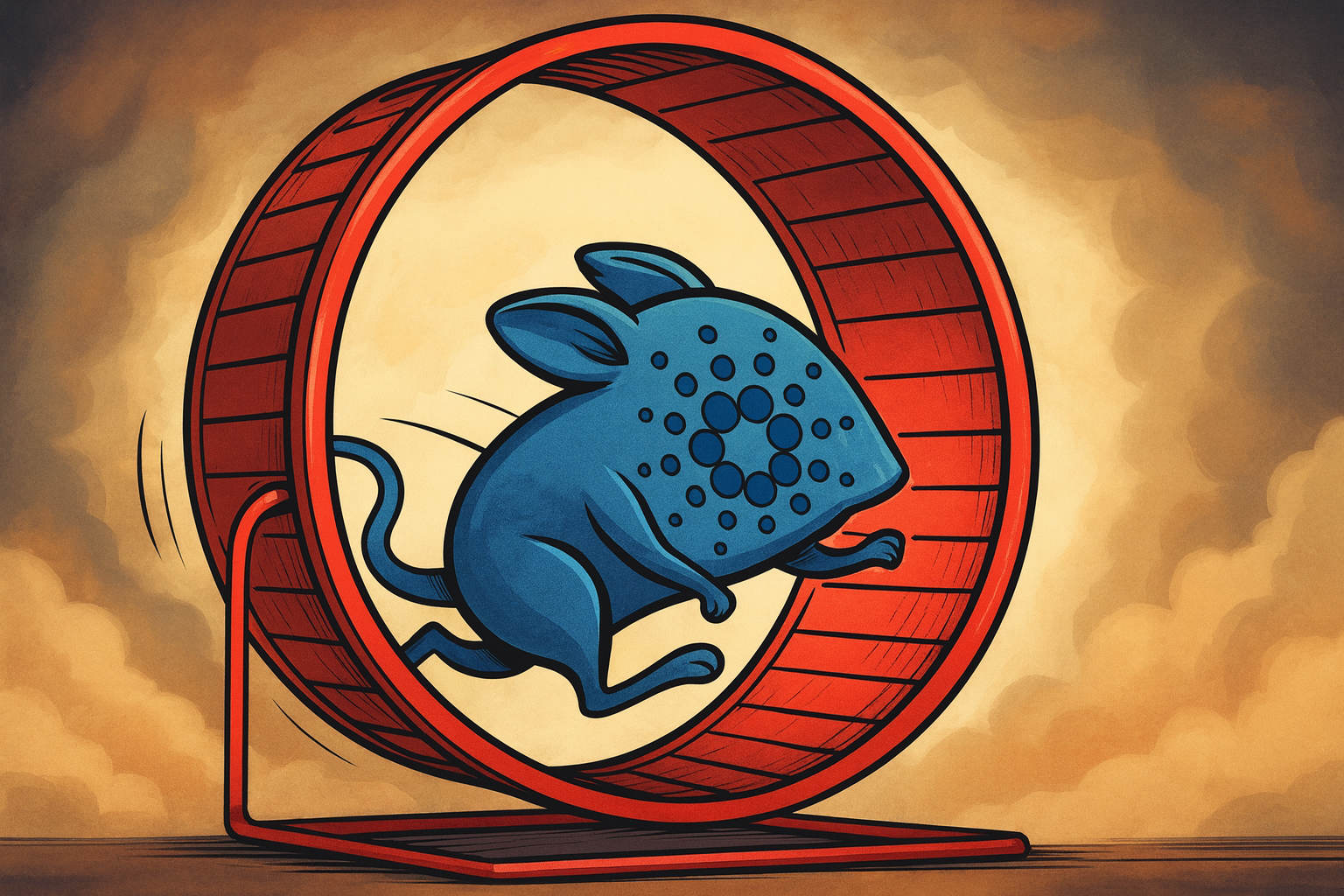
The Network Didn’t Fail. It Proved Itself.
On November 21, 2025, Cardano experienced what some feared might be a catastrophic event: a chain split. For about 14 hours, parts of the network diverged, with two versions of the blockchain running in parallel. But despite the panic and technical confusion, the result was clear—Cardano didn’t stop. The chain kept producing blocks, the network kept running, and the community coordinated a fix in real time. Far from exposing a flaw, the incident demonstrated just how solid Cardano’s architecture really is.
What Actually Happened: A Bug Meets an Edge Case
The chain split began when a malformed delegation transaction—created by an operator using AI-generated code—triggered a rarely encountered bug. The bug, which had been dormant in Cardano’s core software library since 2022, involved a discrepancy in how nodes processed transaction data during serialization and deserialization.
When this malformed transaction entered the network, some nodes interpreted it as valid while others rejected it. As a result, certain stake pool operators began building blocks on a forked version of the chain. This led to a temporary split: two incompatible chains running simultaneously.
Crucially, this was not a network halt. Cardano’s Ouroboros consensus algorithm continued to function. Blocks were still produced. Most users didn’t even notice the split until infrastructure like explorers, wallets, and exchanges began reporting inconsistencies. Transaction delays increased and around 3.3% of pending transactions were lost in the fork that was eventually discarded—but the underlying blockchain logic kept moving forward.
How Cardano Healed Itself
The recovery process was swift and decentralized. Core developers issued a patch to reject the malformed transaction type. Stake pool operators across the world upgraded quickly, voluntarily aligning with the correct version of the chain. No hard fork was required. No rollback or centralized intervention was needed. The protocol and the people around it did exactly what they were designed to do.
This recovery wasn’t just about code—it was about coordination. Cardano’s structure relies on a globally distributed group of node operators who can act independently but coherently. In this case, their rapid consensus allowed the network to self-correct in less than a day.
Why This Makes Cardano Stronger
Resilient systems aren’t the ones that never break. They’re the ones that recover quickly and accurately when they do. That’s exactly what happened here. Cardano faced a serious test, and it passed with its ledger intact and its community mobilized.
Rather than damage confidence, the event served as a validation of Cardano’s layered design and governance philosophy. It showed that even rare and difficult-to-detect bugs can be addressed within the existing framework. It also demonstrated that decentralization, when well organized, can outperform centralized systems in resilience.
Interestingly, even competitors took notice. The CEO of Solana—often seen as Cardano’s rival—publicly praised Cardano’s approach, acknowledging its strength in areas like formal verification and decentralized recovery. Such recognition from outside the ecosystem adds weight to the idea that Cardano’s fundamentals remain among the most robust in the space.
What It Means for Developers, Users, and Investors
For developers, the incident highlights the importance of safety in smart contract deployment. It also underscores the value of Cardano’s conservative, peer-reviewed approach to protocol changes. While some may criticize its pace, the trade-off for stability and recoverability is now clearer than ever.
For users, the key takeaway is trust. The network didn’t stop. Their funds remained safe. Their transactions, for the most part, were processed normally. And even when things went wrong, the fix didn’t rely on centralized authority—it relied on code and cooperation.
For investors, it signals maturity. Cardano didn’t implode. It didn’t require emergency governance. It didn’t pause block production. It endured, adapted, and continued. That’s more than can be said for many other blockchains in moments of crisis.
Final Word: Recovery Is Strength
Cardano’s chain split wasn’t a failure. It was a demonstration. It showed that robust protocol design, backed by a coordinated global community, can overcome unforeseen problems without permanent damage. No blockchain is immune to bugs—but few can claim they’ve weathered one this gracefully.
In a space where narratives often swing between hype and fear, the message from Cardano is simple and steady: even under pressure, Cardano has never stopped.
Cardano
Cardano Faces First‑Major Chain Split; Charles Hoskinson Involves FBI After Developer’s Experiment
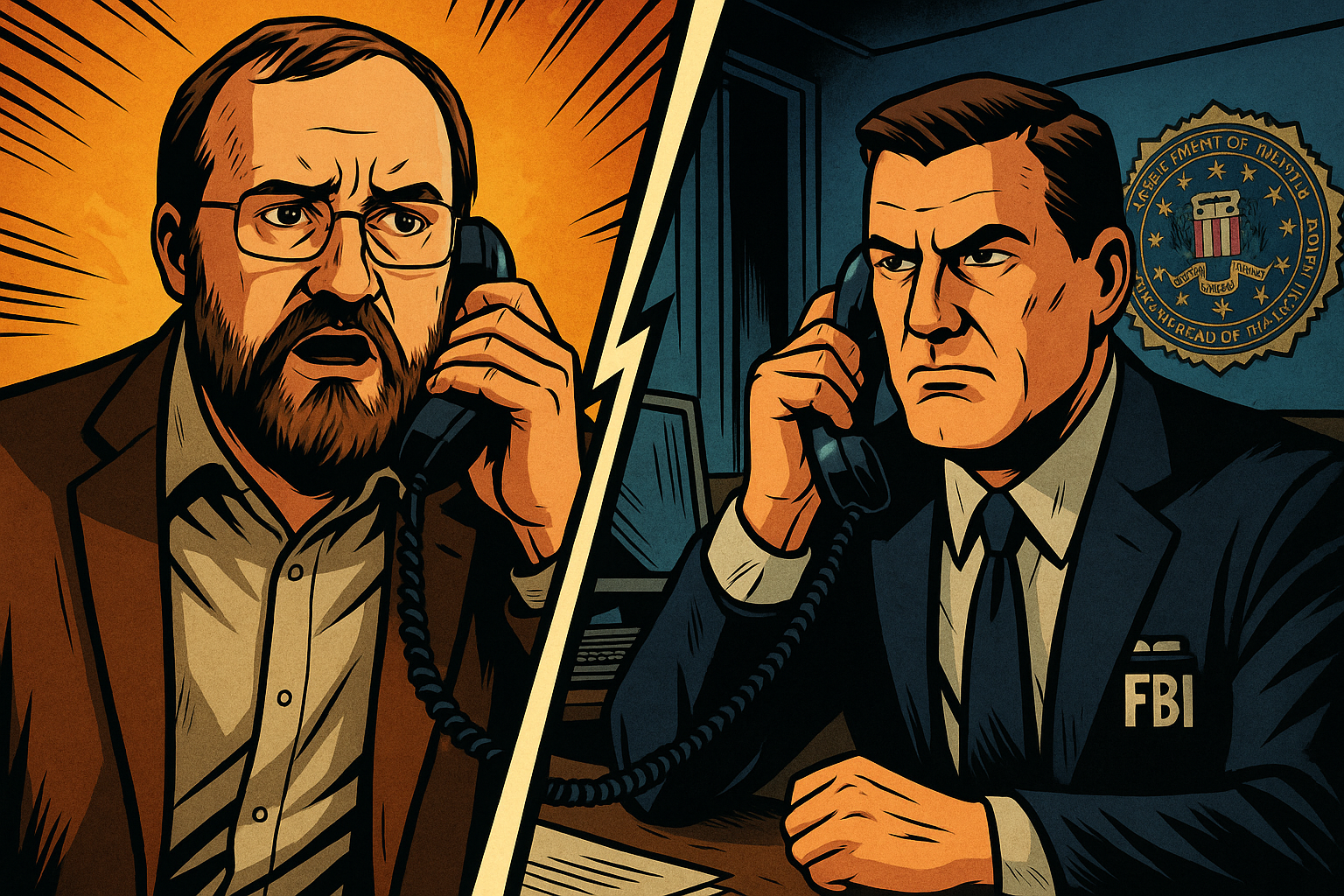
The blockchain world was shaken when Cardano suffered a temporary yet dramatic chain split on November 21, caused by a malformed delegation transaction that exploited a bug dating back to 2022. The culprit, a staking‑pool operator working under the alias “Homer J.,” later admitted the incident began as a personal challenge — he tried to reproduce a “bad transaction,” used AI‑generated instructions and inadvertently triggered a divergence in ledger history.
What happened on the chain
The split emerged when a delegation transaction passed validation in older node versions but was rejected by newer one, causing network nodes to diverge into two incompatible chains. Block production never stopped, yet exchanges paused operations amid the confusion. Emergency patches were deployed within three hours and the system converged back to a single chain by the next day. No user funds are reported lost so far.
Hoskinson’s response and legal implications
Charles Hoskinson described the incident as a “premeditated attack” rather than a simple error and confirmed that the U.S. Federal Bureau of Investigation is investigating the matter. He asserted that the operator “knows the FBI is already involved.” Meanwhile an employee of IOHK, Cardano’s lead development organisation, publicly resigned citing concerns about future legal consequences for development mistakes.
Market and ecosystem impact
In the immediate aftermath the native token ADA dropped by as much as 16 percent before stabilising. The broader narrative now hinges on governance trust, code‑audit rigour and the growing risk that even mature proof‑of‑stake networks can be shaken by obscure legacy bugs. The debate encapsulates one of crypto’s defining tensions: decentralisation versus operational risk.
What to monitor next
Attention will focus on whether Cardano can restore stakeholder confidence and sharpen its node‑software deployment processes. Will staking‑pool‑operators upgrade swiftly to the patched version? Will governance transparency improve? Also, regulators may begin paying closer attention to blockchain network incidents being treated as cyber‑attacks. And for ADA holders and developers, the key question remains whether network resilience can outpace reputational damage.
-

 Cardano2 months ago
Cardano2 months agoCardano Breaks Ground in India: Trivolve Tech Launches Blockchain Forensic System on Mainnet
-

 Cardano2 months ago
Cardano2 months agoCardano Reboots: What the Foundation’s New Roadmap Means for the Blockchain Race
-

 Cardano2 days ago
Cardano2 days agoSolana co‑founder publicly backs Cardano — signaling rare cross‑chain respect after 2025 chain‑split recovery
-

 Bitcoin2 months ago
Bitcoin2 months agoQuantum Timebomb: Is Bitcoin’s Foundation About to Crack?
-

 Cardano2 months ago
Cardano2 months agoAfter the Smoke Clears: Cardano, Vouchers, and the Vindication of Charles Hoskinson
-

 Ripple2 months ago
Ripple2 months agoRipple CTO David “JoelKatz” Schwartz to Step Down by Year’s End, but Will Remain on Board
-

 News2 months ago
News2 months agoRipple’s DeFi Awakening: How mXRP Is Redefining the Role of XRP
-
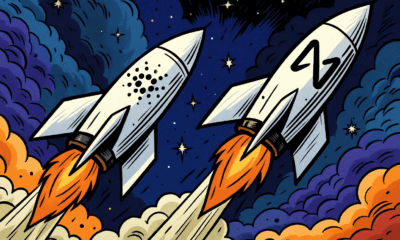
 Altcoins2 months ago
Altcoins2 months agoNEAR and Cardano Forge a New Cross‑Chain Alliance: What It Means for ADA and Web3 Interoperability









